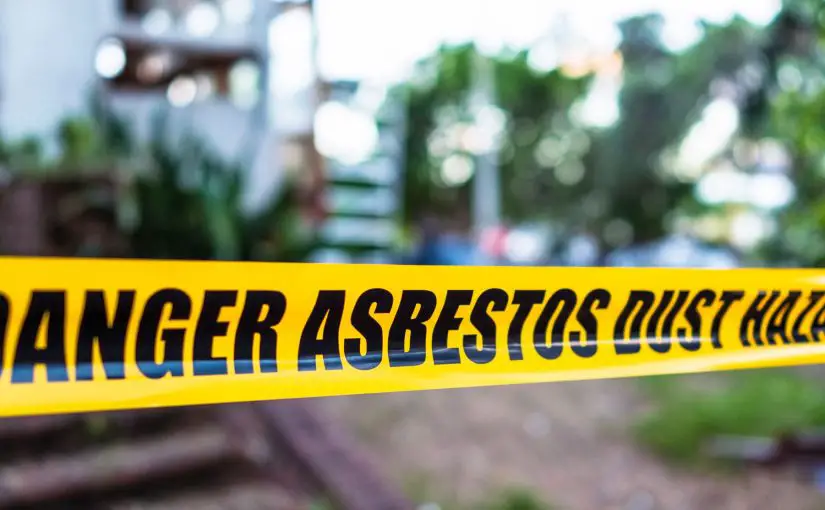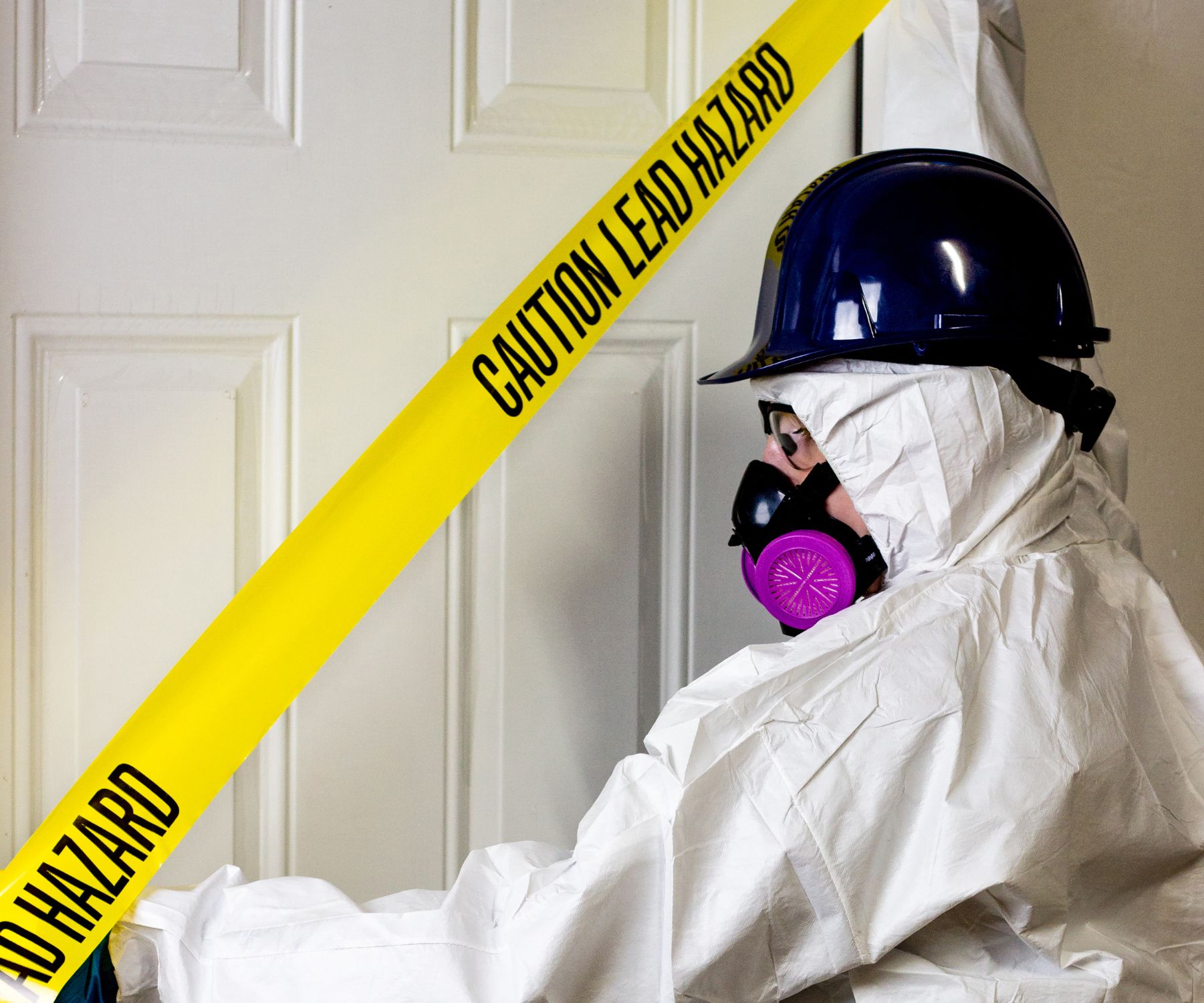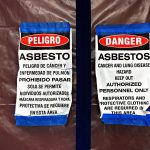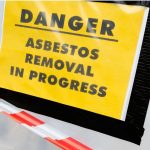Table of Contents
How Long Does Asbestos Stay Airborne?
“The duration asbestos fibers remain airborne depends on factors like fiber size and disturbance method – smaller fibers under 5 microns can stay suspended for weeks, while larger fibers settle in hours. More aggressive mechanical release causes longer airborne times than low-impact disturbance, but there are no exact rules for how long asbestos stays airborne after release.”
Airborne Duration Table
| Fiber Type | Size (Microns) | Indoor Air (Calm) | Outdoor Air (Windy) | Constantly Disturbed Air | Common Sources |
|---|---|---|---|---|---|
| Chrysotile | >5 | Within hours | Within minutes | Up to 24 hours | Roofing, tiles, insulation, textiles |
| Chrysotile | <5 | Up to a few days | A few hours | Up to weeks | Gaskets, brake linings |
| Amphibole | >5 | Within hours | Within minutes | Up to 24 hours | Insulation, cement pipes |
| Amphibole | <5 | Several days | A few hours | Weeks to indefinitely | High-temp applications like boilers |
| Sanded Asbestos | Mixed | Significant airborne presence for 48+ hours | Rapid dispersion but high initial concentration | Elevated levels for weeks in confined space | Flooring, ceiling tiles, joint compounds, plaster |
Airborne Duration of Different Types of Asbestos
Chrysotile Asbestos
Common Sources: Chrysotile, also known as white asbestos, is the most common form of asbestos found in buildings. It is frequently used in roofing materials, floor and ceiling tiles, insulation, and various textiles. Chrysotile fibers are also found in automotive parts like gaskets and brake linings due to their resistance to heat.
Airborne Duration:
- Large Fibers (>5 Microns): These fibers tend to settle within hours in calm indoor environments and within minutes in outdoor or windy conditions.
- Small Fibers (<5 Microns): Smaller chrysotile fibers can remain airborne for up to a few days in calm indoor air, and for a few hours outdoors. In constantly disturbed air, such as during ongoing construction activities, these fibers can stay suspended for up to several weeks.
Amphibole Asbestos
Common Sources: Amphibole asbestos includes types such as amosite (brown asbestos) and crocidolite (blue asbestos). These fibers are typically found in high-temperature applications such as insulation for pipes and boilers, and in some cement products. Amphibole fibers are known for their needle-like shape.
Airborne Duration:
- Large Fibers (>5 Microns): Similar to chrysotile, larger amphibole fibers will settle within hours in calm air and within minutes when exposed to windy conditions outdoors.
- Small Fibers (<5 Microns): The thinner and more durable nature of amphibole fibers means they can remain airborne for several days in calm air, and for a few hours in windy conditions. In environments where the air is constantly disturbed, these fibers can remain suspended for weeks or even indefinitely in extreme cases.
Sanded Asbestos
Common Sources: Sanded asbestos refers to the dust created when asbestos-containing materials like flooring, ceiling tiles, joint compounds, and plaster are mechanically disturbed through sanding. This process is particularly risky as it aggressively releases a mixture of fiber sizes into the air.
Airborne Duration:
- Mixed Fiber Sizes: The act of sanding can release a significant concentration of asbestos fibers into the air. In calm indoor environments, this dense concentration of fibers can result in a significant airborne presence for more than 48 hours. Outdoors or in windy conditions, the fibers will disperse more rapidly but still start at a high initial concentration. In areas with constant disturbance, elevated levels of airborne fibers can persist for weeks, especially in confined spaces.
 Other Types of Asbestos:
Other Types of Asbestos:
- Tremolite Asbestos:
- Common Sources: Not used commercially on its own, tremolite asbestos can be found as a contaminant in chrysotile asbestos, vermiculite insulation, and talc powders.
- Airborne Duration: Similar to other forms of asbestos, tremolite fibers can remain airborne for extended periods, especially the finer fibers. The specific duration would depend on the environment and the form in which the tremolite is present (e.g., within chrysotile or in contaminated vermiculite).
- Actinolite Asbestos:
- Common Sources: Less commonly used, actinolite asbestos can be found in some insulation materials, paints, and sealants.
- Airborne Duration: Actinolite fibers, due to their brittle nature, can easily become airborne and may stay suspended for prolonged periods similar to other amphibole types.
- Anthophyllite Asbestos:
- Common Sources: Rarely used in commercial products, anthophyllite can be found in some composite flooring and insulation materials.
- Airborne Duration: Given its rarity and limited use, specific airborne duration data is less available, but it would likely mirror other amphibole asbestos fibers in behavior.
Additional Situations of Concern:
- Demolition of Asbestos-Containing Structures:
- Large-scale demolition can release significant quantities of asbestos fibers into the air, especially if proper abatement procedures are not followed. The duration and concentration of airborne fibers would be highly variable, depending on the methods used and the types of asbestos-containing materials present.
- Natural Weathering and Degradation:
- Asbestos-containing materials that are exposed to the elements over time can degrade, releasing fibers into the air. This can occur in older buildings with exterior asbestos products or in natural deposits. The duration of fibers remaining airborne would depend on environmental conditions.
- Fire and High-Temperature Exposure:
- Exposure to high temperatures or fire can cause asbestos-containing materials to break down, releasing fibers. The impact of such situations on airborne duration is complex and would vary based on the intensity of the heat and the type of asbestos material involved.
Situations with Increased Danger and Risk
| Situation | Risk Level | Context |
|---|---|---|
| DIY Renovations in Older Homes | High | Homes built before the 1980s may contain asbestos in various materials. DIY renovations, like sanding, drilling, or cutting into walls, ceilings, or floors, can unknowingly disturb these materials, releasing fibers. The lack of professional control and containment can lead to prolonged exposure. |
| Accidental Damage to Asbestos-Containing Materials | Moderate to High | Accidental disturbances, such as damaging insulation, ceiling tiles, or other asbestos-containing materials, can release fibers. The risk is particularly high if the area is not promptly and properly contained and cleaned. |
| Professional Asbestos Abatement | Low to Moderate | When conducted by licensed professionals, asbestos removal is performed under strict regulations and safety measures, minimizing the release of fibers and exposure. However, some risk remains, especially if safety protocols are not adhered to. |
| Natural Disasters or Building Deterioration | High | Events like earthquakes, floods, or significant wear and tear can disturb asbestos-containing materials in structures, leading to unexpected exposure. The extent of fiber release depends on the condition of the materials and the nature of the disaster. |
| Occupational Exposure in Construction, Demolition, and Maintenance | Very High | Workers in these industries face the highest risk, especially when working in older buildings where asbestos is more common. Without proper precautions, these activities can result in significant asbestos fiber release and prolonged exposure. |
- DIY Renovations in Older Homes:
- Risk Level: High
- Context: Homes built before the 1980s may contain asbestos in various materials. DIY renovations, like sanding, drilling, or cutting into walls, ceilings, or floors, can unknowingly disturb these materials, releasing fibers. The lack of professional control and containment can lead to prolonged exposure.
- Accidental Damage to Asbestos-Containing Materials:
- Risk Level: Moderate to High
- Context: Accidental disturbances, such as damaging insulation, ceiling tiles, or other asbestos-containing materials, can release fibers. The risk is particularly high if the area is not promptly and properly contained and cleaned.
- Professional Asbestos Abatement:
- Risk Level: Low to Moderate
- Context: When conducted by licensed professionals, asbestos removal is performed under strict regulations and safety measures, minimizing the release of fibers and exposure. However, some risk remains, especially if safety protocols are not adhered to.
- Natural Disasters or Building Deterioration:
- Risk Level: High
- Context: Events like earthquakes, floods, or significant wear and tear can disturb asbestos-containing materials in structures, leading to unexpected exposure. The extent of fiber release depends on the condition of the materials and the nature of the disaster.
- Occupational Exposure in Construction, Demolition, and Maintenance:
- Risk Level: Very High
- Context: Workers in these industries face the highest risk, especially when working in older buildings where asbestos is more common. Without proper precautions, these activities can result in significant asbestos fiber release and prolonged exposure.
 Risk Mitigation Strategies
Risk Mitigation Strategies
For each of these scenarios, specific strategies can be employed to mitigate the risks:
- DIY Projects: Before beginning any renovation project in an older home, have the materials assessed for asbestos. If asbestos is present, consider hiring a professional for removal.
- Accidental Damage: If asbestos-containing materials are accidentally damaged, isolate the area, avoid further disturbance, and consult with an asbestos abatement professional.
- Professional Abatement: Ensure the abatement company is licensed and follows all safety regulations. Stay out of the area until the work is complete and clearance air testing confirms it’s safe to return.
- Natural Disasters: After a disaster, have a professional assess the damage for potential asbestos exposure risks before starting clean-up or renovation efforts.
- Occupational Safety: Workers should use appropriate PPE, follow safety protocols, and participate in asbestos awareness and safety training programs.
FAQ
1. How long does asbestos stay in the air?
The duration asbestos fibers remain airborne depends on factors like fiber size and disturbance method. Smaller fibers under 5 microns can stay suspended for weeks, while larger fibers settle in hours. More aggressive mechanical release causes longer airborne times than low-impact disturbance, but there are no exact rules for how long asbestos stays airborne after release.
2. Why is asbestos dangerous?
Asbestos fibers, when inhaled, can cause serious health issues like lung cancer and mesothelioma. These microscopic fibers are resistant to heat and chemicals, allowing them to remain in the lungs for long periods and potentially leading to lung tissue scarring, shortness of breath, and even mesothelioma.
3. What factors determine how long asbestos stays airborne?
The duration asbestos fibers stay airborne depends on factors such as fiber size and type, the amount of asbestos released, ventilation conditions, and disturbance method. Larger fibers settle faster, while thinner fibers can remain suspended for weeks. Amphibole asbestos remains airborne longer than chrysotile. Greater disturbance leads to higher initial fiber levels, and ventilation and disturbance methods also influence airborne times.
4. How long do different types of asbestos fibers stay airborne?
Heavier fibers above 5 microns settle within hours or minutes in calm or windy conditions, respectively. Smaller fibers below 5 microns can remain airborne for weeks with constant disturbance, and in extreme cases, they might never settle. Major fiber release can lead to elevated airborne presence for 48 hours or more, while low-impact disturbance results in dropped concentrations after a few hours.
5. What recommendations exist for minimizing asbestos exposure?
To minimize asbestos exposure, avoid disturbing asbestos-containing materials. If released, leave the area, isolate it if possible, and contact professionals. During renovations, have materials inspected for asbestos and hire accredited professionals for removal. Use protective equipment, improve ventilation, and follow safety regulations when dealing with older buildings.
6. How long is the latency period for asbestos-related health issues?
The latency period between asbestos exposure and the onset of diseases can be 20 years or more. Asbestos-related health issues may not arise until decades after initial exposure. The EPA warns that there is no safe level of asbestos exposure, and higher exposure increases the risk of disease.
7. What are the risks associated with inhaling asbestos fibers?
Inhaling asbestos fibers can lead to lung tissue scarring, shortness of breath, and mesothelioma, a rare cancer affecting the lung and abdominal linings. The severity of health risks increases with the amount of inhaled fibers. Early evaluation after exposure is advised even though fiber inhalation doesn’t always lead to disease.
-
How can asbestos be safely removed from a home or building?
- Safe asbestos removal requires professional asbestos abatement teams who follow strict regulations and safety protocols. This includes sealing off the area, using specialized equipment, and wearing appropriate protective gear. It’s critical not to attempt DIY removal, as improper handling can increase the risk of fiber release and exposure.
-
Can asbestos be present in newer buildings or homes?
- While the use of asbestos in construction has significantly declined since the late 20th century, it’s not entirely banned in some countries, including certain uses in the United States. Newer buildings may still contain asbestos in specific materials, so it’s important to check construction documents or have materials tested if there’s any doubt.
-
What should I do if I accidentally disturb asbestos-containing materials?
- If you suspect you’ve disturbed asbestos, stop work immediately to prevent further fiber release. Isolate the area, and avoid any airflow that could spread fibers further. Contact professional asbestos abatement services for assessment and removal if necessary. Do not try to clean up or contain the material yourself.
-
Are there any health screenings recommended for individuals exposed to asbestos?
- Individuals with significant asbestos exposure should consult their healthcare provider for advice on monitoring their health. This may include regular chest X-rays, lung function tests, and in some cases, CT scans to detect early signs of asbestos-related diseases.
-
How should asbestos waste be disposed of?
- Asbestos waste is hazardous and requires special handling and disposal procedures in line with local and federal regulations. It must be wetted, sealed in leak-tight containers with proper labeling, and disposed of at approved waste sites. Only licensed professionals should handle and dispose of asbestos materials.


 Risk Mitigation Strategies
Risk Mitigation Strategies





